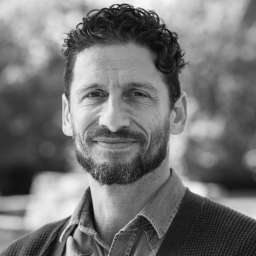Thirty-one years ago this week, deaf students protested and shut down Gallaudet University, asserted the right of deaf people to self-determination, captured international attention, inspired broad public support, and made successful demands that resulted in the first-ever deaf university president.
One of my earliest memories as a deaf child was attending a Deaf President Now (DPN) rally 3,000 miles from Washington, D.C., and experiencing the sweet anticipation when I. King Jordan was selected. When he declared to the world that “deaf people can do anything except hear”, it felt like the sun was about to rise after a cold winter night.
The widespread hope was not misplaced. Would the current achievements of deaf people have been possible if not for the doors that the protest events opened in American public life? Nobody can know for sure.
What I do know, however, is that both of my deaf grandmothers worked in the back offices of a bank because it was one of the few available jobs to deaf women. And that my deaf father had to ask his neighbors what the T.V. was saying about President John F. Kennedy in Dallas.
Because of the protest events of 1988, though, we now have unprecedented accommodations in public life to access critical information and pursue employment centered around our passions, interests, and talents today.
We also know that two U.S. representatives who sponsored the landmark Americans with Disabilities Act (ADA) of 1990 – Senator Tom Harkin and Congressman Stony Heyer – said the ADA would not have happened without the DPN protest.
While the university, community, and country have made social progress since that fateful week, we can agree there is still plenty of work yet to be done. That some people have moved forward should not obscure the fact that some others are still left behind today. That some phrases may have worked yesterday should not stop us from questioning their efficiency today.
Speaking of the latter, when we achieve something notable today as deaf people and are then asked by those looking in: But, how?! In response, our instinct is, as almost as sure as our knees snap when hit with that orange reflex hammer, to relive that fateful moment in 1988, thirty-one years later, by pointing out:
WE CAN DO ANYTHING EXCEPT HEAR!
Is this not a yawn-inducing statement? Hippies have “Make love, not war.” Radicals have “Piss On Pity.” Is this really the best we can do?
Furthermore, we do not discuss enough the illogic and naivete of the DPN motto that we persist in throwing around like a tattered baseball. For one thing, “Deaf people can do anything except hear” is circular.
(Imagine blondes saying they can do anything except not have blonde hair!)
For another thing, ‘Deaf people’ are complex individuals whose lived experiences are not always shared. Put differently, what about Matt Maxey of Deafinitely Dope? Is he deaf? (Yes.) Can he hear? (Well, yes.) Can he wait at coffee shops for his friends without fearing arrest? (Probably not.)
Thirty-one years later, as we revisit historical monuments and social practices, it is somewhat of a mystery why this reflexive saying hasn’t been re-imagined yet. It is 2019. We should be able to improve on outdated declarations that were once incisive wisdom.
Nonetheless, the DPN protest is a timely anecdote in this tumultuous age. 56 years ago, a charismatic minister said we have a dream. 31 years ago, four student leaders marched on the U.S. Capitol and announced that we still have a dream. Today, many of us still share dreams.
But how do we make dreams real? We do not have to look at fairy tales for answers.
In the spring of 1988, students in Washington, D.C., were warned about rules and laws and given explanations but persisted. At the end of that historic week, a deaf president was selected by a hearing-majority Board of Trustees. Two years later, the Americans with Disabilities Act was passed with a Democratic-controlled Congress and a Republican president.
Thirty-one years later, in this day and age of polarization, contempt, and tribalism, the path to achieving progress in a democratic society remains the same.
The local genesis of the DPN movement in 1988 may have been that “Deaf people can do anything except hear,” but its universal legacy rests in illuminating the truth that people cannot do much without listening to others. That the soundness of progress is not centered around yelling and hearing but on confronting our minds and moralities for shared understandings with those we might not identify at first glance.
May we celebrate the 31st anniversary of the DPN protest by remembering that we have it in our power to re-imagine, re-describe, and re-create our worlds. The tricky part is that it takes moral courage and human cooperation.


Leave a reply to Louise Stern Cancel reply